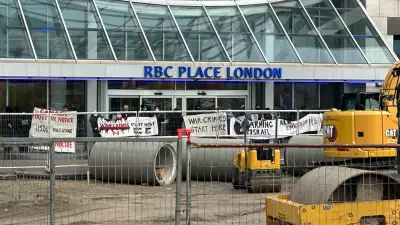
The aftermath of Canada's first federal budget in nearly two years reveals significant structural changes to the public service that have sparked intense reactions across the political spectrum. Finance Minister Mark Carney's Budget 2025 includes substantial workforce reductions that labor leaders are calling "deeply concerning" and comparable to Conservative-era cuts.
Union Opposition Mounts Against Workforce Reductions
Public sector unions have united in their condemnation of the budget measures. The Public Service Alliance of Canada (PSAC) described the plan as deeply concerning, while the Canadian Union of Public Employees (CUPE) accused the government of prioritizing big business interests. The National Union of Public and General Employees (NUPGE) drew direct parallels to the Stephen Harper Conservative government's austerity measures from the early 2010s.
Union leaders including PSAC National Executive Vice-President Alex Silas, PSAC President Sharon DeSousa, PIPSC President Sean O'Reilly, CAPE President Nathan Prier, and AJC Vice-President Vivian Funk have publicly decried the announced cuts. Their collective concern centers on the planned reduction of 40,000 positions from the federal public service.
The Scale and Method of Public Service Cuts
While the number appears substantial, context reveals a more nuanced picture. The 40,000 positions represent only a fraction of the workforce expansion that occurred during Justin Trudeau's decade as prime minister. When the reductions are complete, approximately 330,000 Canadians will remain on the federal payroll—still significantly higher than the 258,000 employees in 2015.
The government plans to achieve these cuts through attrition and workforce adjustment provisions that were reportedly co-developed and negotiated with the unions. This approach suggests that many departing employees would have been leaving anyway, though critics worry about the loss of institutional knowledge and expertise.
Technology and the Future of Public Service Delivery
Unions have raised alarms about the government's increasing reliance on technology, particularly AI chatbots, to deliver services. PSAC specifically warned that "instead of investing in frontline services and the workers who keep Canada running, the government is doubling down on job cuts and AI chatbots that will weaken Canada's social safety net."
However, supporters of the budget argue that technological integration could empower a leaner workforce to maintain or even improve service delivery. While some observers remain skeptical about AI's potential, the government appears committed to using technology to offset workforce reductions.
The budget arrives amid concerning fiscal projections, with red ink and increased debt service charges forecasted for the foreseeable future. Proponents view workforce trimming as a necessary measure for fiscal sustainability, similar to how taxpayers bear costs for civil society.
As the implementation phase begins, the battle over the public service's size and capabilities will likely intensify, with unions preparing to protect their members and the government seeking to balance fiscal responsibility with service delivery expectations.





